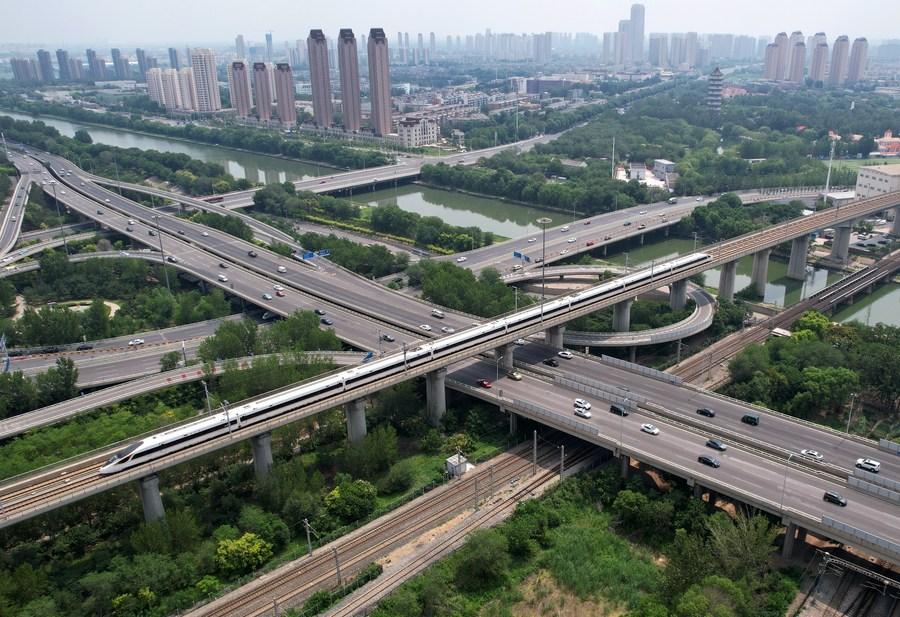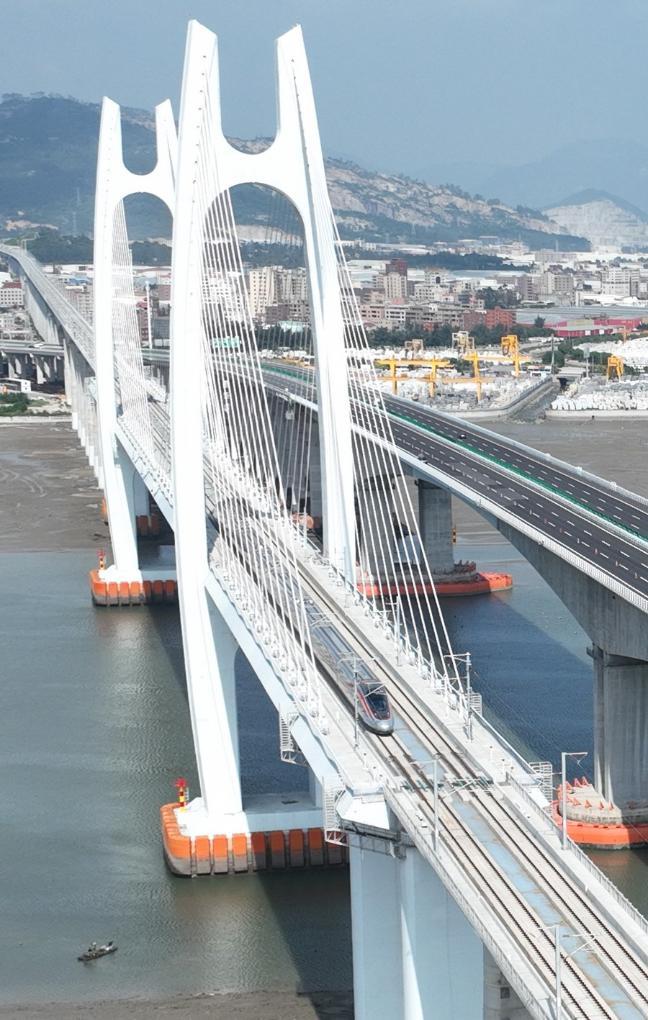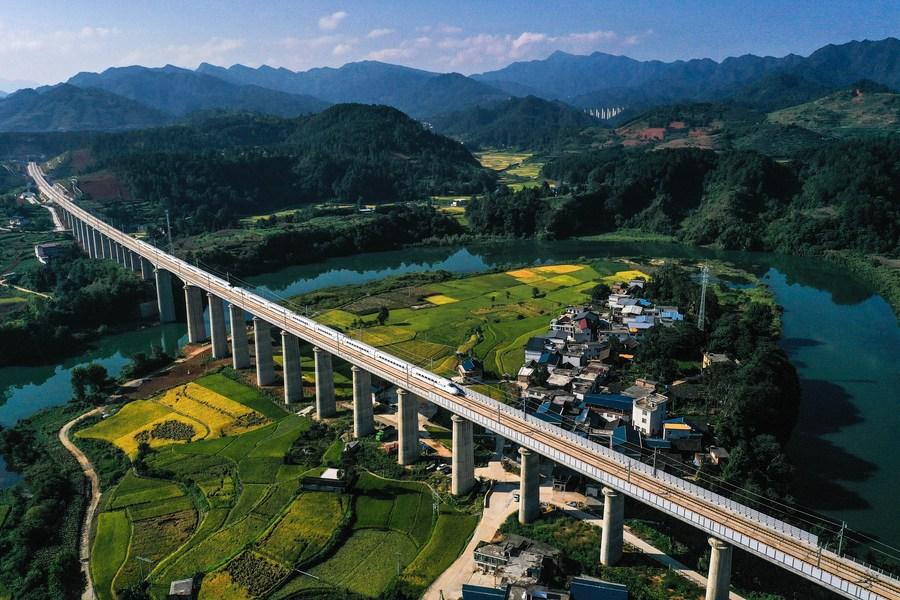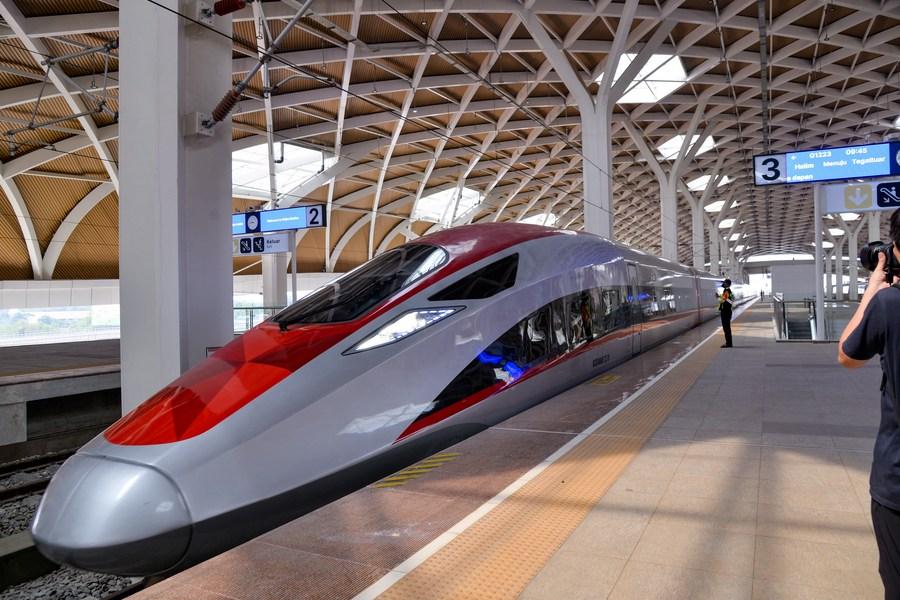China's high-speed rail journey on faster track in 2023
2023.12.27
TIANJIN, Dec. 26 (Xinhua) -- Every workday, Wang Manman takes the high-speed train from the Chinese city of Tianjin to Beijing, with a journey that takes just around 20 minutes. During the morning rush hour, she has the flexibility to choose from over 10 trains.
Passengers read magazines, bury themselves in their phones, or simply doze off while waiting to arrive.
"It is fast and very convenient, just like taking a subway ride," Wang said.

In 2008, the year China hosted the Summer Olympic Games, the Beijing-Tianjin Intercity Railway, with a design speed of 350 km per hour, entered operation, unveiling a fast-expanding modern high-speed railway network in the world's second-largest economy.
China, originally a latecomer to modern transport, now has the world's largest high-speed railway network. As of the end of November, the total operation mileage of China's railway network exceeded 155,500 km, including 43,700 km of high-speed railways.
China's rail development continues to speed ahead in 2023, with the launch of more lines aimed at fostering economic and social development within the country and beyond.
One of the most notable additions to China's vast high-speed rail network this year is the Fuzhou-Xiamen-Zhangzhou railway, the country's fastest cross-sea high-speed rail, where trains reach a maximum speed of 350 km per hour along the west coast of the Taiwan Strait.
Starting operation on Sept. 28, the 277-km railway slashes travel time between the cities of Fuzhou and Xiamen, both in east China's Fujian Province, to just under an hour.

The railway features a breathtaking sea view with 19.9 km of tracks built over the sea. It will connect multiple city clusters and transform the areas of Fuzhou and Xiamen into a 1-hour living circle, officials said.
China has mastered advanced technologies for building tracks, long-span bridges, and complex tunnels in challenging geological and climatic conditions, expanding high-speed rail to remote and ethnic minority areas to foster economic and social development.
In late November, a 238-km section of the Sichuan-Qinghai railway in western China became operational after 12 years of construction, providing high-speed train travel options for Maoxian, the largest county inhabited by the Qiang ethnic group.
In the same month, the railway connecting the captivating city of Lijiang and Shangri-la in southwest China's Yunnan Province opened to traffic. The new line will boost tourism and industrial development, particularly benefiting Shangri-la in the Diqing Tibetan Autonomous Prefecture.
In August, the Guiyang-Nanning High-speed Railway started full operation, linking the capital cities of Guizhou Province and Guangxi Zhuang Autonomous Region. The railway, designed for a top speed of 350 km per hour, is the first of its kind in both Guizhou and Guangxi, known for their karst landscapes.

High-speed rail is symbolic of the new structure of the Chinese economy, influencing all aspects of society.
From January to November, a total of 3.56 billion railway passenger trips were made nationwide, more than double from the same period last year, the China State Railway Group Co., Ltd. (China Railway) said.
To meet booming travel demand, China Railway has improved its railway operating plan and increased transport capacity. The average daily number of passenger trains reached 9,638 in China, a year-on-year increase of 52 percent.
China's high-speed railway has also gone global.
The latest example is the Jakarta-Bandung High-speed Railway in Indonesia, officially launched in October. It is the first overseas high-speed railway project fully utilizing Chinese railway systems, technology, and industrial components.

With a design speed of 350 km per hour, the 142.3-km high-speed railway shortens the journey between Indonesia's capital, Jakarta, and Bandung, a famous tourist city. It has handled more than 1 million passenger trips.
The train service can bring lots of convenience to locals and help boost the economy along the route, said Juni Stefanus Santoso, a 23-year-old Indonesian student who is studying at Tianjin-based Tiangong University.
"China's high-speed rail provides more countries and regions with the opportunity to join the fast track of shared development," said Cong Yi, vice president of Tianjin Administrative Institute. "In the future, it will continue to contribute to China's modernization and opening up, and promote global balanced, coordinated and inclusive development."



